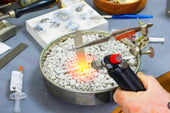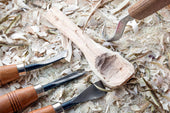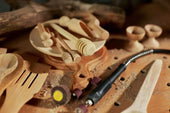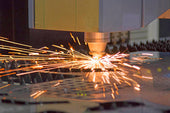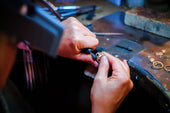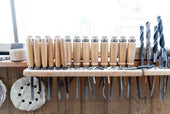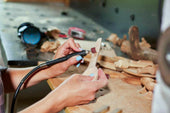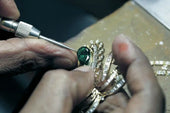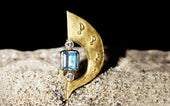Carving has long been a hallmark of craftsmanship and artistic expression. From ancient civilizations inscribing stories on stone to modern artisans using laser precision to personalize jewelry, the tools of the trade have undergone tremendous changes over time. This transformation reflects humanity's enduring desire to combine creativity with technology - in the process enhancing accuracy, speed and accessibility.
1. The Origins: Hand Carving and Traditional Techniques
Engraving dates back thousands of years, with some of the earliest known examples found on prehistoric tools and cave walls. Ancient Egyptians and Mesopotamians used chisels and gravers to etch religious symbols, hieroglyphs, and decorative motifs into stone, metal, and clay.
During the Middle Ages and Renaissance, hand engraving flourished in weaponry, coins, and sacred art. Engravers used burins — steel tools with sharply angled tips — to create intricate lines and textures. The precision required demanded a master’s touch, honed over years of apprenticeship.
2. The Printing Revolution: Engraving for Reproduction
With the rise of printing in the 15th and 16th centuries, engraving took on new functional importance. Metal plates were hand-carved with text and images, then inked and pressed onto paper — a method known as intaglio printing. Artists like Albrecht Dürer elevated this craft, producing engravings that remain celebrated to this day.
This shift helped democratize information and art, though the process remained labor-intensive and technically demanding.
3. The Industrial Age: Mechanization and Mass Production
The 18th and 19th centuries brought dramatic change. Mechanized tools like pantographs allowed engravers to trace and reproduce designs at various scales, enabling more consistent results across industrial applications — including firearms, watches, and banknotes.
Factories began to adopt powered engraving systems using belt-driven or rotary machines, speeding up the process and making it viable for mass production. While hand engraving remained valued for custom work, mechanization opened new commercial opportunities.
4. The Digital Era: Precision Meets Innovation
Today, engraving is more versatile than ever thanks to digital innovation. Laser engravers and CNC (computer numerical control) machines allow for flawless, high-speed engraving on an array of materials — from metal and glass to leather and acrylic.
These tools are used in a wide variety of industries:
-
Jewelry: Laser engraving creates personalized messages with stunning accuracy.
-
Electronics: Serial numbers and barcodes are engraved on micro-components.
-
Gifts and Crafts: Hobbyists use compact engravers for customizing products at home.
Even handheld electric engraving pens now come with adjustable speed settings, interchangeable bits, and ergonomic designs, offering professional results to casual users.

5. From Artisan to AI: What’s Next for Engraving?
As artificial intelligence and automation continue to develop, engraving tools are beginning to include smart features — such as app-based control, auto-depth calibration, and design scanning.
We may soon see engraving systems that use machine learning to mimic artistic styles, or tools that can interpret spoken commands to produce custom designs on the fly.
At the same time, traditional hand engraving is experiencing a quiet revival among artisans and collectors who appreciate the tactile intimacy and uniqueness of handcrafted work.
A Craft That Bridges Eras
From the rudimentary chisels to the advanced digital lasers, the evolution of carving tools reflects the eternal balance between art and innovation. Whether it is hand-carving precious stones or programming the laser engraving machine, the spirit of personalization and precision has always been the core of this enduring craft.
Looking to the future, one thing is clear: The art of engraving will continue to evolve - not to replace tradition, but as a powerful extension of it.


